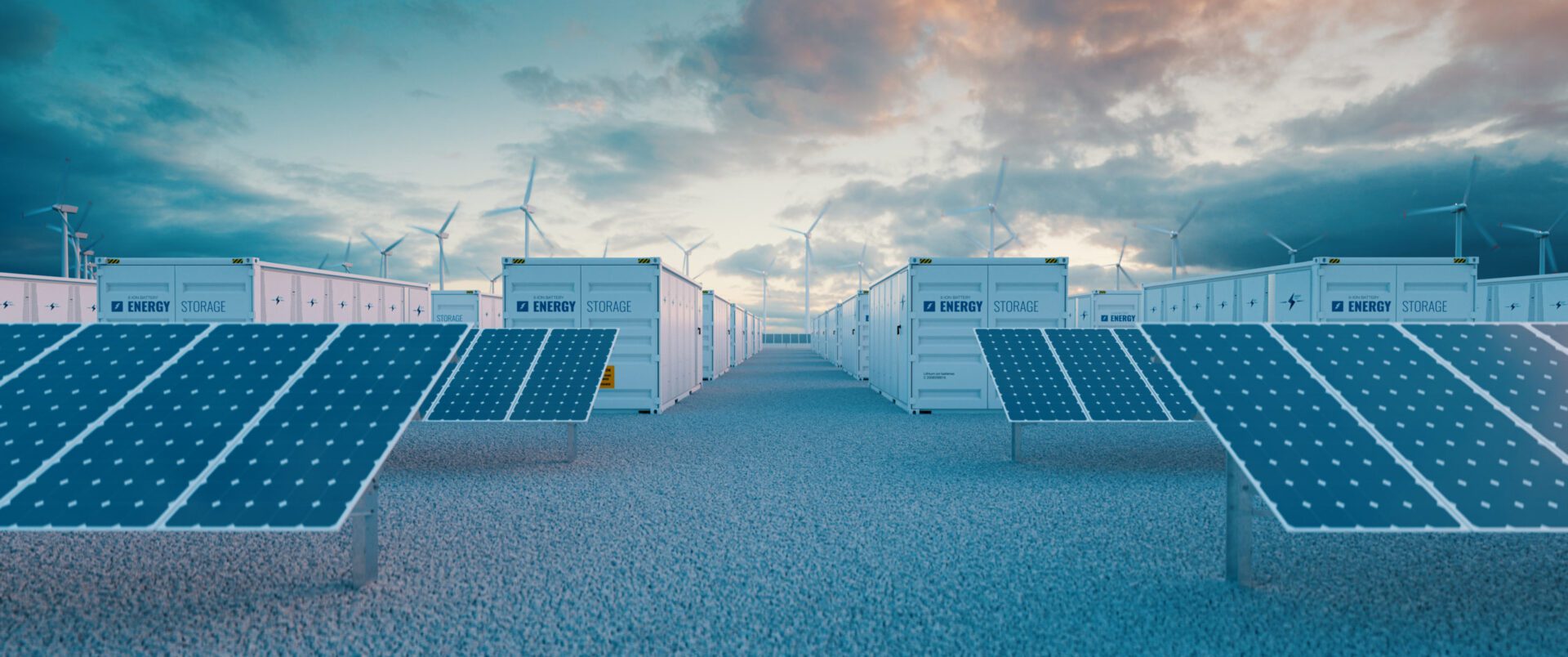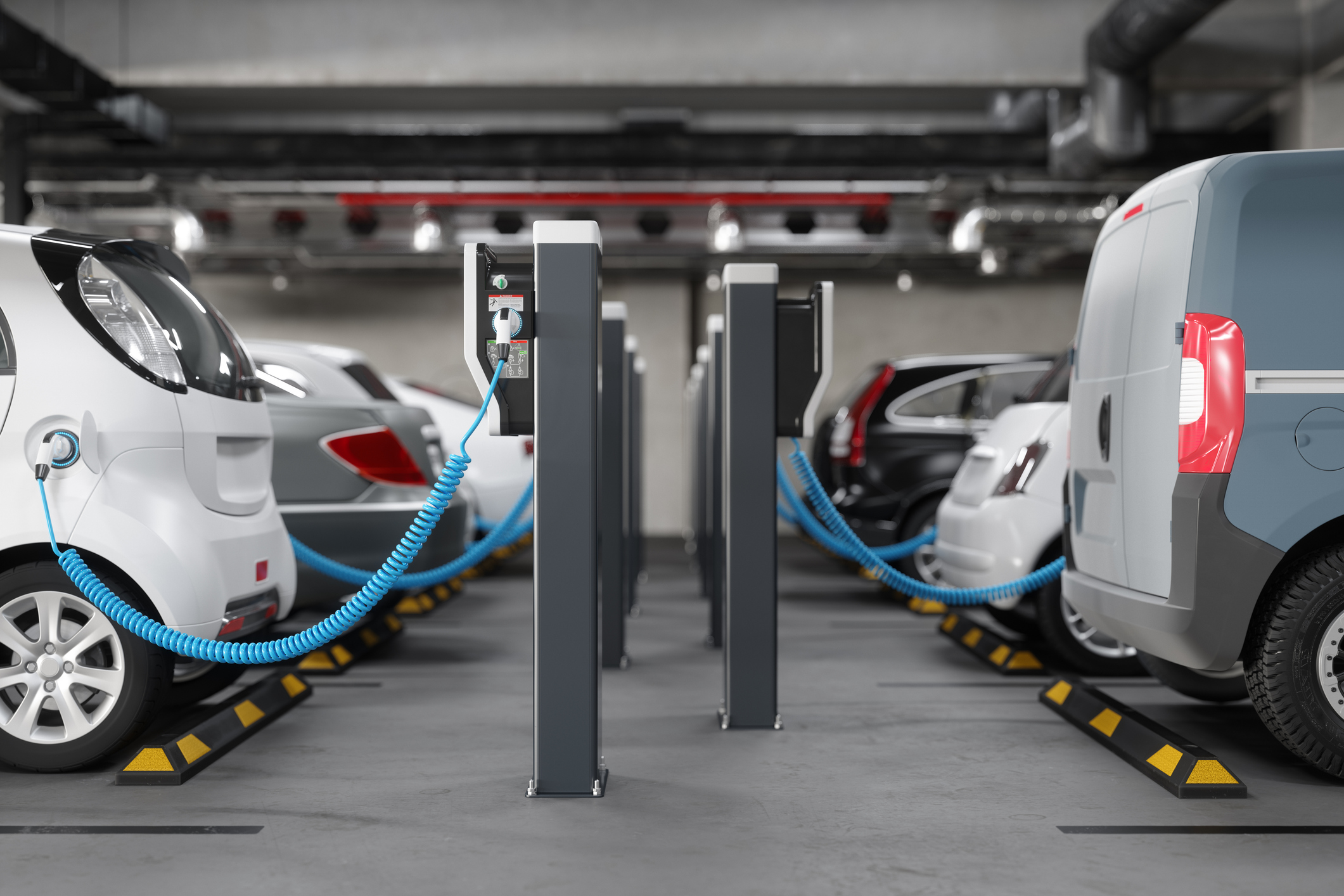As consumers migrate to personal distributed energy resources (DERs) like rooftop solar or electric vehicles (EVs) and their requisite charging requirements, utilities are challenged to keep up with an ever-evolving energy need. In a shift to renewable energies away from fossil fuels, the need for reliable battery storage has never been more imperative. Renewable energy storage is critical in both the existential threat of climate change and the regulatory requirements that utilities must meet to minimize harmful carbon emissions. Power outages are incredibly costly to the economy, with a Department of Energy report estimating nearly $150 billion in lost annual revenue; increasing battery storage mitigates this potential, by providing more reliable power.
Battery storage yet has a long road ahead to meet the promise of a cleaner energy future. Fortunately, battery storage technologies provide an opportunity for utilities to enhance their DER program needs through reciprocal V2G charging opportunities, or through the employment of virtual power plants. Let’s look at how these battery storage technologies are ramping up quicker than your utility might expect.
Climate Change & Electrification
Since 1880, the Earth’s temperature has increased by .008º C every decade, leading to higher incidences of peak demand days, erratic weather patterns, and rising sea levels. To mitigate rising greenhouse gas emissions caused by fossil fuels and industrial processes, global decarbonization efforts were designed to minimize the looming threat of climate change. A parallel objective to decarbonization goals, electrification looks to shift the worldwide energy portfolio away from a reliance on fossil fuels like coal or petroleum.
This reimagining of energy markets has created unprecedented challenges for the utility industry, which is tasked with managing an entirely new energy load curve while satisfying regulatory demands that reflect global decarbonization goals. Between the electric vehicle (EV) industry and distributed energy resource (DER) markets booming, the question isn’t when these changes are coming, but how quickly a utility operation can prepare for the inevitable.
What is Battery Storage?
The terms battery and battery storage are used interchangeably in this article to describe either the mechanism or the purpose of the device: a receptacle to store energy for later use. Energy is captured through electrochemical processes between two metals that react to generate power. Specifically, battery energy storage systems (BESS) are battery storage devices designed to enable energy for renewable energies. To reach Net-Zero 2050 goals, accelerated battery storage is imperative to cleaner, sustainable energy that has a longer charge saved for when it’s needed the most. This is critical to match the pace of electric vehicle development, as well as to increase reliance on solar and other renewables.
The History of Battery Storage
The term “battery” was applied by American inventor Benjamin Franklin to a collection of Leyden jars —glass jars filled with metal foil similar to a capacitor—in the mid-18th century, although there is evidence of primitive batteries dating back to 250 BC. Our modern concept of the battery has only been around for approximately the last two centuries, with the creation of the voltaic pile. The technology evolved through many iterations, each offering a marginal improvement over the last.
By 1859, the first rechargeable lead-acid battery was created, and as before these designs continued to improve in overall charge capacity and longevity over time. These early batteries were the primary power source before the creation of large scale electric generators or the electric grid and were integral in the development of telegraphs, telephones, and more.
Types of Battery Storage
There are and have been many methods of battery storage available over time. Early types of battery storage included various means of manipulating and managing the potential of a stored electrochemical charge. Now, a few common storage types are:
- Compressed air energy storage – A battery that uses compressed air to store and release energy
- Mechanical gravity energy storage – These batteries use gravity to generate electricity
- Flow batteries – Rechargeable fuel cells that utilize chemical energy produced by two chemical components dissolved in liquid and kept separate
To keep global warming below 2º C, the world needs at least 266 GW of storage by 2030, so expect these battery storage systems to evolve and adapt to a rapidly changing energy market.
Battery Storage Today
Most modern batteries rely on lithium-ion, a low-density metal with extraordinary electrochemical potential and energy-to-weight ratio. These batteries are found predominantly in electric vehicles and mobile phones, making the material highly sought after. Lithium batteries are dangerous to mine and aren’t without their environmental concerns, but fortunately, those concerns are already being addressed. Currently, there is research going into the development of cleaner methods for lithium production, and for good reason: increasing battery storage capacity and reliability is an incredibly lucrative business.
Clean Energy
The premise of electrification is that it will ultimately reduce global carbon emissions to renewable energies. For now, that energy is produced primarily by coal and other fossil fuels, which in the U.S. account for 61% of all energy generated. The shift to renewables requires a great investment in battery storage technologies to enhance their lifespan and capacity. Fortunately, the interest is there, as multi-billion dollar banking agencies are betting big on the future of battery storage. These investments signal an imminent shift away from fossil fuels and toward far more batteries and prosumer technologies available to the public, which present a chance for utilities to secure a more reliable grid and potential revenue stream.
Battery Life
Modern batteries are designed with longevity in mind, requiring a 10-15 year minimum performance minimum. Increasing this lifespan is crucial to the long-term employment of electrified technologies, which will charge and recharge regularly to match decreased reliance on fossil fuels. Especially as this relates to EV charging, this creates a challenge to the grid by dramatically shifting the load shape, as they often charge outside of peak demand hours. Battery charging speeds reflect the scale of the battery, meaning that some can charge much quicker than others. Current battery types include:
- Level 1 – The most common type of battery, which charges at around 3-6 miles of range per hour
- Level 2 – These batteries are increasingly popular and charge much quicker at about 20-30 miles of range per hour
- DC Fast Charging/Tesla Supercharging – The fastest charging option currently available, this type of charging can yield around 80% of a full charge in less than an hour
Eventually, the objective is to lower charge times exponentially to decrease the “range anxiety” that proves as a barrier to consumers considering an electric vehicle. While faster public charging options will conform to pre-existing load demand paradigms, it may take a while yet to realize that technology. Likewise, fast charging will still pull an even greater amount from the grid, further confounding utility efforts. Fortunately, through vehicle-to-grid (V2G) reciprocal charging strategies and increased DER programs, utilities can work now to mitigate a difficult and increasingly unpredictable grid.
The Future of Battery Storage
Increasing battery storage capacity and charging speeds aren’t the only short a long-term objectives for the industry. As battery prices rise in the U.S. to meet demand, there are currently plans to increase production, invest in recycling efforts, and determine opportunities for remote charging to help the supply chain. Beyond that, there are even wilder ideas that include embedding charging stations into the road itself or quantum batteries that entirely forego the standard electrochemical reactions in favor of quantum mechanics that can and will revolutionize the energy landscape.
These advancements are seeing an enormous amount of capital and public attention, which will continue to evolve the technology. With the potential for so much change, how can utilities prepare for such an uncertain, but promising, future?
EV Telematics
As stewards of the grid, utilities are the frontline in managing distribution, transmission, and continuity of service. With a growing prosumer base expanding the DER market and more EVs on the road than ever (with more to come), utilities are at a crossroads on how to provide reliable service that adheres to regulatory requirements while balancing an already tight budget. By placing your DER and demand flexibility programs into a direct relationship with both tech disruption and global decarbonization efforts, utilities can open up new revenue streams while strengthening their operational efficiencies.
Now, utilities can even monitor and gather data from the vehicle itself through EV telematics to better understand the charging times that will continue to challenge the grid. With EV telematics, utilities can determine average travel and charging times, and usage data that can inform programmatic decisions. For example, utilities with a battery program can determine the best times to employ V2G charging strategies when it would best serve your customers and grid stability. A feature of a robust distributed energy resource management system (DERMS), EV telematics provides useful intel that can ease range anxiety and increase potential enrollment.
Battery Storage Conclusion
While regulatory measures designed to curb carbon emissions and the tech disruption caused by increased DER use have challenged utility operations, there is an incredible economic opportunity in investing in global decarbonization efforts. As of 2017, the U.S. generated a total of 4 billion MWh of electricity, but only had a storage capacity of 431 MWh. That number must increase to meet global decarbonization efforts, which allow longer-term storage of renewable energies. Battery storage and DER technologies will continue to evolve and utilities that fail to prepare for the inevitable will miss valuable opportunities for revenue, reliability, and customer satisfaction.





